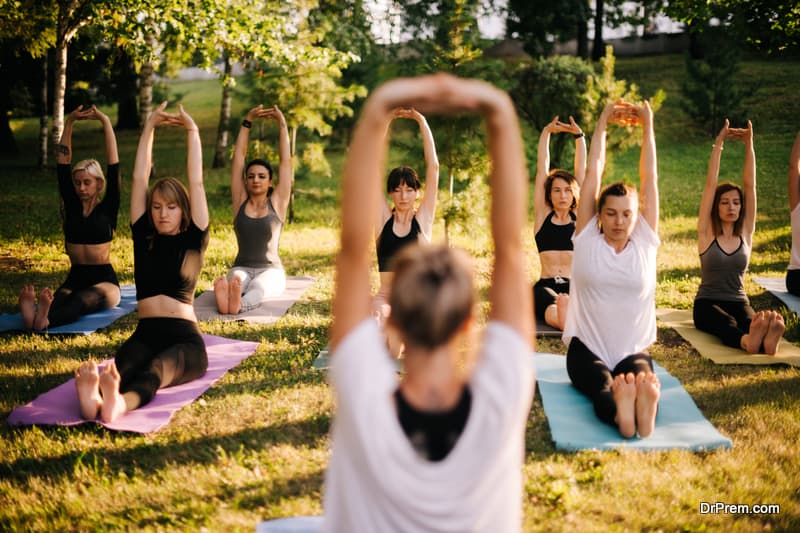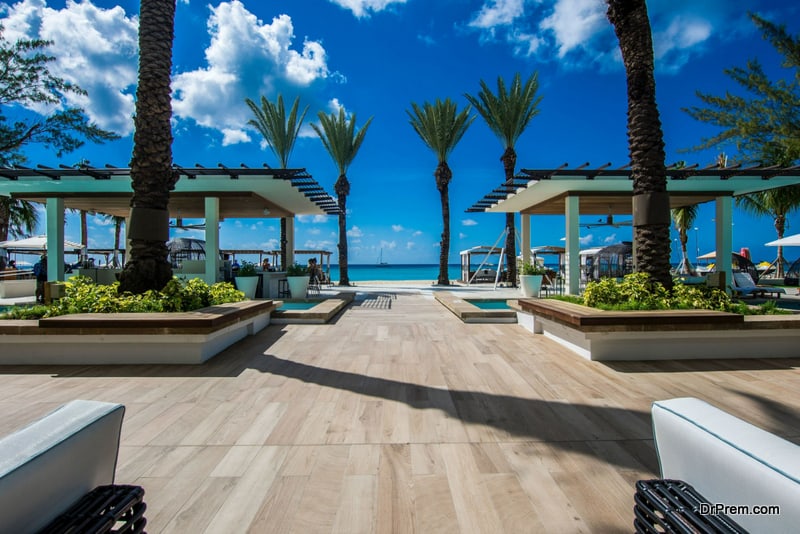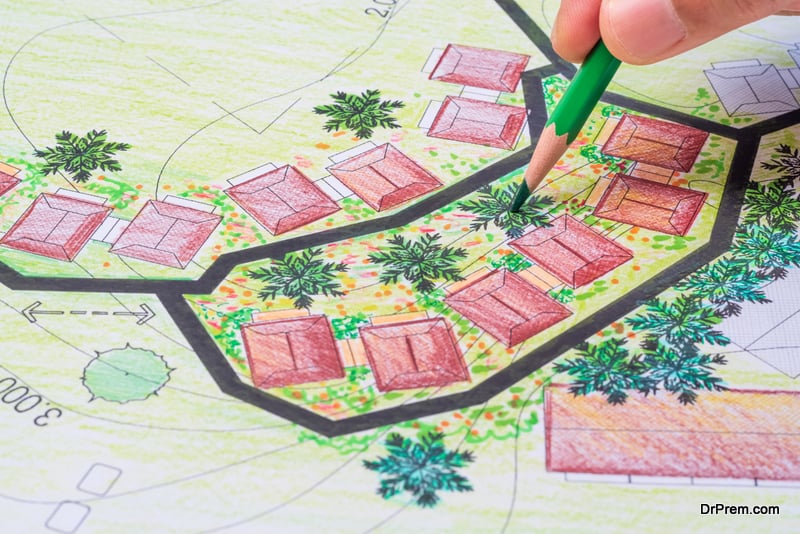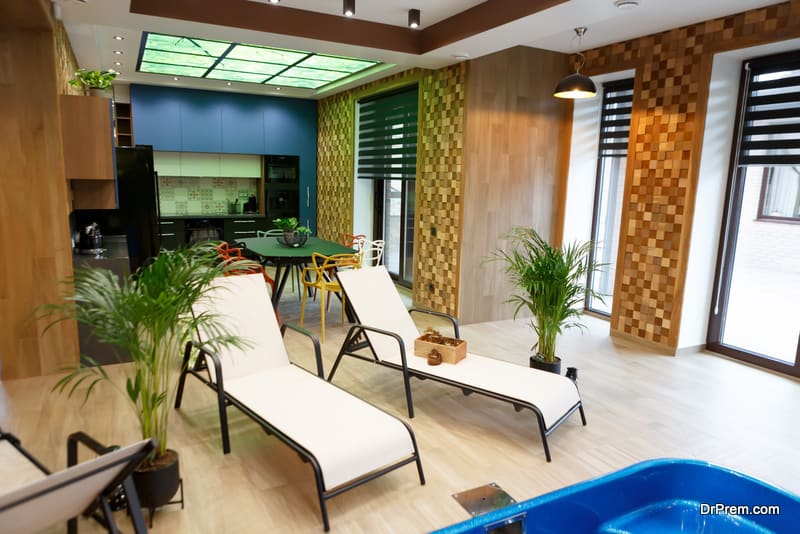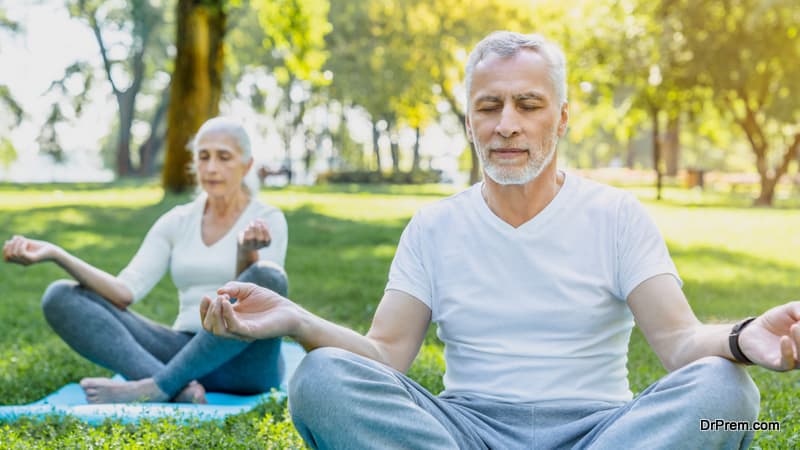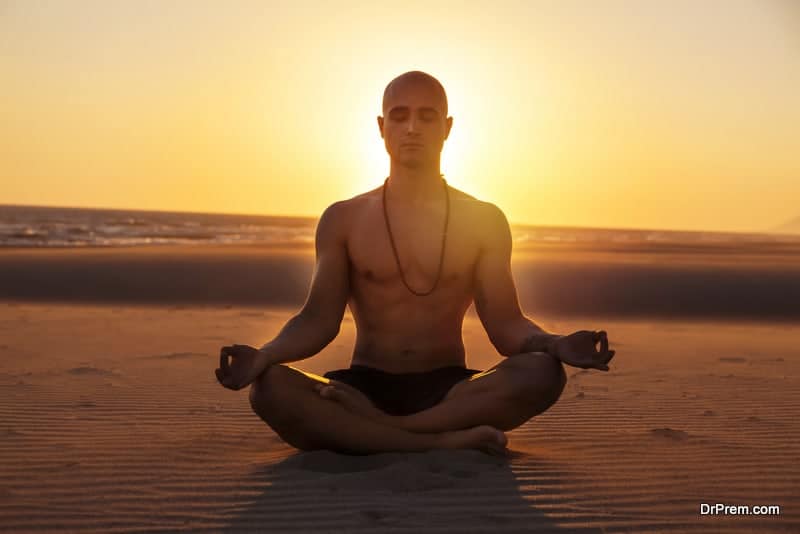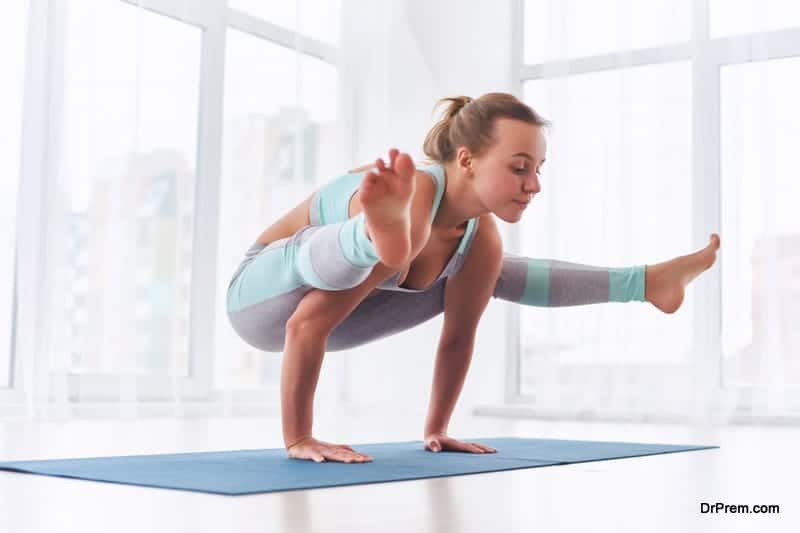Environment and external factors are responsible for nearly 80-90% of our disease risks and health conditions, according to the GWI. Therefore, where we live decides how we live. Today, people are not only living at home; they are working from home, exercising at home, and even accessing medical care from home.
The ultimate eye-opener – home is where wellness is. A healthy home is looked upon as a sanctuary where we live, grow, and thrive. Investing in our home wellness means investing in self-well-being. According to the Global Wellness Summit, the wellness real estate market is projected to touch $887 billion by 2027!
If you are in the real estate business, an architect, a structural engineer, an infrastructure developer, a town and city planner, a material supplier, or closely connected to real estate development, you have to rethink your approach.
Read on to find out how to make your real estate business more wellness-focused impacting lives and your growth. But first, the basics, beginning with:
Wellness Real Estate – Guide, Trends, News, Update, Research and Consultancy by Dr Prem
-
What is wellness real estate?
-
Booming of Wellness-Certified Buildings
-
Why the wellness real estate is in the immediate need for a reset
-
Studies show how health is affected by unhealthy dwellings
-
Obesogenic behavior is no longer acceptable
-
Stress and anxiety levels have shot up
-
Community health has dwindled
-
Why Wellness Real estate is important for developers
-
Figures indicating booming global wellness real estate
-
Top wellness real estate markets in the world
-
Key ingredients of wellness real estate
-
The growing demand for WELL Building Standard certification
-
Wellness in buildings – Marketing hype or value-added realization?
-
What is the future of wellness real estate?
-
Who is your target customer
-
What are the benefits of wellness real estate?
-
How does it benefit corporates?
-
How to plan Wellness Real Estate
-
Endeavor to deliver a hassle-free experience
-
Wellness real estate trends for today and tomorrow
-
Advanced wellness integrations to take wellness real estate to the next level
-
Wellness real estate growth prospects are staggering – How big is the opportunity?
-
Tracking the way to a sustainable living environment
-
Wellness Real Estate Case Studies
-
Latvia presents the first Wellness Residence
-
Leading Wellness real estate developer raises $20 million to promote community wellness
-
Listings with over-the-top wellness amenities
-
Affordable Wellness Housing
What is wellness real estate?
Wellness real estate is an evolving concept about creating proactively planned living environments in urban or remote locations to support the holistic wellness of residents and guests. The concept enables them to live, work, relax, and do regular activities in a healthier manner amid wellness settings.
It also gives immense opportunity to developers to create sustainable environment and engaging wellness community.
Home and commercial property buyers are aware of the effect of built environments on different aspects of their lives, as well as the capacity for wellbeing that is in a wellness focused property.
Growth of wellness communities where modern age people are highly inclined to holistic dwelling fostering the overall body and mind wellness is on the rise. Wellness real estate players from different corners are coming up with unique community development plans setting up environment-friendly habitation options focused on wellness.
The vital factor in the growth of wellness real estate is that it is not restricted in developing wellness resorts, hotels or spas but is gradually spreading its wings in community areas as well.
The staggering cost of unhealthy dwelling environment is leading to unsustainability.
Booming of Wellness-Certified Buildings

Following are the significant findings:
· Beyond Covid-19, the total number of wellness-certified building projects has grown nine times from 2017-2020.
· As on August’21, globally there were 960 WELL and Fitwel certified projects with more 1431 projects in the pipeline for wellness certification.
· More than half of the wellness certified projects are in the US.
· Hospitality, office, and commercial building projects are the major earners of Wellness Certifications while one-third of these certifications went to residential projects.
· An additional 7684 properties (mostly in Mexico and United States) received new rating standards for checking disease transmission launched by WELL and Fitwel.
Despite the growing demand for wellness real estate certifications, those given by WELL and Fitwel represent a fraction of the entire market. These ratings can be easily extended beyond the simple absolute numbers in the report. A property developer branching out in different locations may fulfill all wellness certification requirements in different properties but may have only got its head office certified.
This could be mainly to get the brand certified as ‘wellness real estate’ which automatically covers all properties in different locations. Although, one cannot rule out location-based requirements in wellness certification that can vary.
Therefore, the certification number does not exactly translate the real number of wellness real estate properties. Moreover, there are other wellness certification organizations in the market that focus mainly on building sustainability and regenerative living rather than holistic wellness. However, other reputed certification companies are shifting to the holistic wellness approach, adding more wellness criteria in their certification. It is not unlikely to expect different wellness rating levels or rating subcategories based on the wellness features of a particular property or a project.
Why the wellness real estate is in the immediate need for a reset could be judged from the following:
- 88% of people living in urban areas are exposed to severe air pollution.
- 24% of global disease and 13 million annual deaths are caused from hazardous environment.
- The risk of mental illness gets increased in city dwelling children and adults.
- 38% of the American population report lack of outdoor community spaces for physical activities.
- Physical inactivity of 25% of adults and 80% of adolescents cost more than $67.5 billion every year in healthcare cost and loss of productivity.
We are living in a compromised natural environment
Unplanned random buildings and constructions are conducive to contagion spread as high occupant density leads to more shared surfaces and less pure air. The World Health Organization has identified poor indoor air can lead to worse outcomes than that outdoors. Outdoor air pollution is responsible for majority of 9 million global premature deaths that could be avoided. A recent study from the Harvard University found a correlation between higher incidences of Covid-19 deaths and higher air pollution levels in the US.
Studies show how health is affected by unhealthy dwellings

Unplanned random buildings and constructions are conducive to contagion spread as high occupant density leads to more shared surfaces and less pure air. The World Health Organization has identified poor indoor air can lead to worse outcomes than that outdoors. Outdoor air pollution is responsible for majority of 9 million global premature deaths that could be avoided. A recent study from the Harvard University found a correlation between higher incidences of Covid-19 deaths and higher air pollution levels in the US.
Obesogenic behavior is no longer acceptable
It is not surprising that our building environment has encouraged sedentary behaviour. People found it easy to park cars and limit walking. They took elevators instead of stairs. Walkable footpaths, sidewalks, biking lanes, and pavements either got vanished or are encroached illegally. Urban planning prioritized vehicular movement over walking and biking.
Stress and anxiety levels have shot up

Community health has dwindled
Rapid urbanization killed open spaces preventing people from healthy activities like jogging, walking, and biking. Private health clubs and gyms are not affordable to all except those in the upper economic bracket. They serve only 4% of the global population (GWI report). Urban population are left with few healthy options as they remain cooped up in their own private spaces being cut off from the world most often.
Why Wellness Real estate is important for developers

Real estate tycoons with a progressive vision take a creative exploration to find innovative ways of combining science, beauty, medicine, and space with architectural styles to redefine the role of the built environment on human beings.
The concept of human friendly real estate has come a long way in finding out the exact nature of interaction between the built structures and the people who dwell in them. The building blocks and the elements that go with it like the access to air, water, nourishment, light, minimalist interior designs, paintings on the wall, space, level of pollution and eventually the quality of your neighbors staying in your block have a direct and significant impact on the quality of life you are going to spend for the rest of your life staying there.
Figures indicating booming global wellness real estate
Real estate developers have more things to cheer about as recent stats from recognized authorities give clear indication about the incredible rise of wellness real estate.
- According to GWI, the sector that was $134 bn industry in 2017 is growing by 6.4% annually and is projected to touch $197 bn by 2022.
- Most importantly, people are willing to pay a premium for healthy dwelling environments.
- In 2020, the sector grew 22% although the overall construction contracted by -2.5%.
- Wellness residential projects tripled from 740 in 2017 to more than 2300 today.
- Hotels with wellness offerings are seeing 65% higher average daily rate than the conventional hotels despite restricted travel and movement.
- Guests and travelers in resorts and hotels are looking for immersive holistic wellness experiences extending throughout the hotel and resort complex.
- The GOP (Gross Operating Profit) performance is much higher in wellness hotels and wellness resorts although there is a higher capital expenditure involved.
- The demand for private villas shot up as individuals look for more space, privacy, and confidentiality to work and relax and steer clear of infection threats.
- Branded residencies grew by 170% since the last decade with increased open spaces and features and amenities promoting wellness and work.
- There has been a major shift in the aging perspective among the baby boomers, newly retired, and those retiring soon. They are actively looking for wellness-focused communities in properties near to nature.
- Medical wellness is getting integrated on a bigger scale in healthcare facilities, wellness resorts, wellness spas, and wellness centers.
Top wellness real estate markets in the world
Latest research figures from GWI (Global Wellness Institute) show amazing growth of wellness real estate across the globe. The US tops the list followed by China, Australia, UK, Japan, France, Germany, Canada, South Korea, India, Netherlands, Switzerland, Norway, Sweden, Austria, New Zealand, Denmark, Italy, Singapore, and Finland.
Key ingredients of wellness real estate
- Ample access to natural resources like light, air, and water that promotes physical, emotional, social, and mental wellbeing.
- Green and open spaces for recreation and physical activity.
- White noise fostering serenity and ‘calmtainment’ (calming entertainment)
- Allowing provisions for individuals to enhance their wellness from their dwelling space.
- On a micro level, the interior decoration and painting should bring about a sense of harmony in one hand optimizing the room illumination on the other. The elements of art, music, greenery and unspoiled nature foster a spirit of being well. It triggers the senses promoting a tranquil haven far away from the harsh grating of life.
The growing demand for WELL Building Standard certification:

Wellness in buildings – Marketing hype or value-added realization?
People are still skeptical whether these wellness architectural features will be used only as a marketing ploy by the property developers or are definitely going to add long term value to the entire human wellness. But with the awareness gripping the society, chances are very high that this would be a permanent feature in future buildings.
Delos, the US based organization has already set up the WELL Building Standard aiming to create a healthy dwelling environment. The standards based on meticulous research and innovative concepts using the most advanced form of technology have already set a global benchmark.
In the US, the performance of buildings is monitored through WELL Building Standard and LEED certifications that increase their net worth substantially. Days are not far when people will be getting mobile apps generated alerts while entering a ‘sick building’. The utility of wellness will not remain a prerogative confined to a specific class of people but will soon spread among the masses.
What is the future of wellness real estate?

This interest is now being observed worldwide, as the pandemic has made people take a closer look at their health and surroundings. Real estate developers should get in on this trend for wellness, in order to emerge as leaders in the next ten years.
Who is your target customer
Your target commercial wellness real estate could be employers who want to be seen as ‘caring’ for their employees. For employees to stay for a long period of time in the same job or company, they must engage with the company. Their needs are beyond the salary and medical and other benefits. Workers these days like to work for companies which provide them with wellness perks such as on-site gyms, meditation spaces, nutritious office eateries, and so on.
Your commercial and residential wellness real estate has to include facilities in which the modern millennial can de-stress, feel pampered and happy in working for the company. Your ad campaigns or presentations for your wellness real estate space should focus on these points.
Wellness-oriented individuals who are willing to pay a little extra for long term health and environmental wellness are your potential customers.
What are the benefits of wellness real estate?
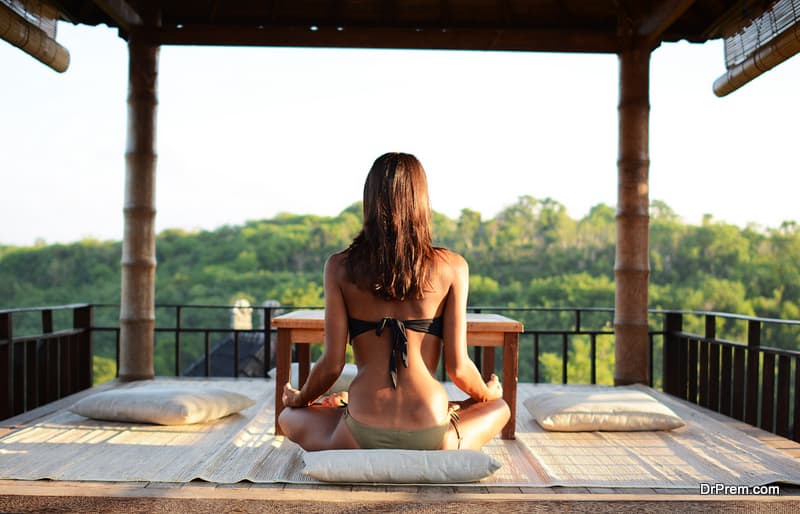
- Supporting healthier, holistic lifestyles which encourage active lifestyle, mind-body health, healthy eating. Integrating ample natural elements brings residents/workers closer to nature.
- Minimizing the impact of environment on health, by reducing exposure to toxic substances indoors, reduces stress, and promotes planet friendly activities
- Enough space for kids and adults to play and exercise within the community leads to better sleep, thus avoiding many sleep related health problems.
- Builds and fosters positive relationships between the residents, by enhancing trust among each other, creating bonds between the elderly and other residents
- The use of hardware and software (community intranet) makes it easier to monitor health
- Helping people to realize that personal health is linked to the environment and people surrounding them – people living in isolation have more mental health problems. A well-designed wellness real estate can bring people out of their homes, and join in activities with other occupants, and thus reduce loneliness and isolation
How does it benefit corporates?
For corporates around the world who bear the healthcare expenses of their employees, investing in wellness real estate acts as a prevention of disease, as well as incentive for productivity. Multinational companies as well as smaller organizations have realised that employee retention depends on a feeling of wellbeing in the workplace. An employee who is calm and focused will also generate more profits. Keeping these things in mind, commercial spaces are now being designed according to wellness goals.
How to plan Wellness Real Estate
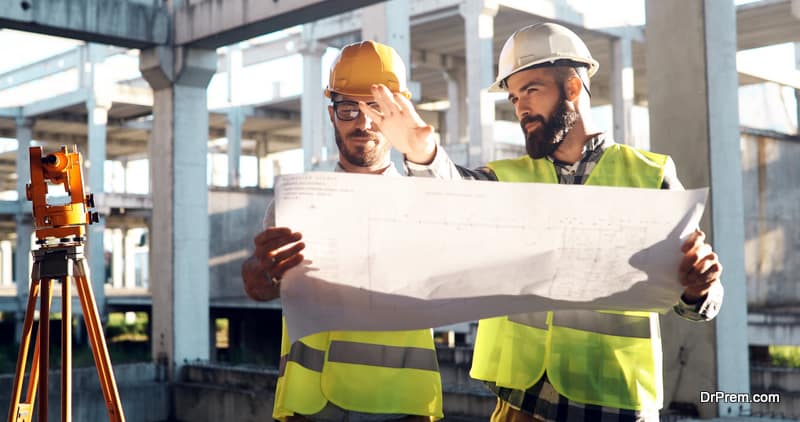
- The local cultural and architecture traditions should be noted and incorporated when you start planning your wellness real estate project. Ask yourself why they need a sustainable lifestyle, and how you can provide it to them. Sustainable projects also mean sourcing locally, using recycled materials, reusing material, while integrating these with the latest and advanced green materials for building. Attaining net zero carbon buildings should also be your aim.
- You should create a project manifesto which should establish your project’s vision, as well as act as the blueprint to guide all the teams in your project, from architects, operations and marketing.
- To encourage walking within the complex, include sidewalks in front of the house, apartment buildings.
- Automobile traffic should be routed to the perimeter of the community.
- Plan for a village green kind of design within the community, where people can sit and socialise, or sit in the natural spaces. Art installations which could be within the buildings as well as open air would act as areas where residents/workers could gather and socialise.
- Use scientific measures to asses the impact of living in a wellness real estate, such as happiness index, age quality index, sleep index and so on.
- Integrate sensors for monitor or track individual activity, health stations can be installed to check the vitals of the residents, community health portals and more.
- Developing longevity and anti-obesity goals.
- Measures to monitor elderly or senior households, while helping them to be independent.
- Introduce the role of the community manager who would design as well as execute community wellness programs
- Focus on high quality public space, some of which have predefined goals/activities, and others are undefined. These spaces should focus on increasing the interaction level of the members of the community.
- Construct energy efficient building, sustainable building, with or without managed services/facilities, depending on the project as well as individual choice
- Minimize manmade or natural factors that create light pollution, noise pollution and so on.
- Designate space for art and culture to improve the quality of life.
- Guide residents on how to live sustainably.
- Include enough features to develop a self-sufficient community.
- Have strategically placed artificial waterbodies such as lakes and waterfalls.
- Create nature trails within the community.
Endeavor to deliver a hassle-free experience
There should be a difference between your wellness community and other conventional communities. A wellness community resident or user must be able to live in harmony with nature as well as other occupants.
Water is important!
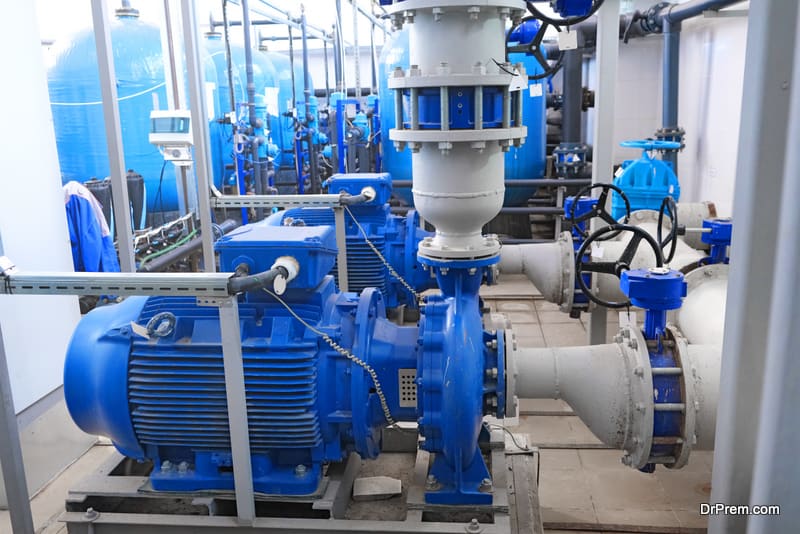
Don’t just focus on the 1%
An important point for wellness real estate developers is that it would be short sighted to focus only on the luxury loving or high-end customers. Developing affordable wellness real estate would help to sell more when there is more demand from all strata of society, and not just the rich one percenters.
Trends in Wellness Real Estate
Among the modern wellness-friendly accommodations, the following typical features are noticed:
- Rooms have upgraded mattress, lightings, dawn simulators and air purifiers
- Sometimes showers loaded with vitamin sprays form a unique feature of a modern bathing room.
- More open indoor spaces without restricted walls except in private areas.
In an interview with a specimen of American population, it was revealed that:
- 87% of them rated quality of environment as a top priority area.
- 73% voted for a free and unrestricted access to fresh and healthy nourishment.
- 55% would like to go for greener space.
- 50% of them preferred places where they can have a leisurely stroll.
- 78% preferred to live in a community with people belonging to different age groups.
Modern property developers give a lot of deliberations to the dwelling environment that would foster a healthy living and engagement, design, connectivity and guardianship.
Wellness real estate trends for today and tomorrow
Wellness is multi-dimensional and wellness real estate development must take a multi-pronged approach. Just by adding modern amenities and features in construction does not lead to wellness real estate development.
Our lifestyle is on a reset, so are our dwelling spaces. Spaces where we live, function, rest, relax or have fun are being redesigned to create purpose-oriented shelters. A testing time for real estate developers and designers to bring out their best in innovation and creativity ensuring financial viability and long-term sustainability in creating the perfect conditions for living well.
Wellness real estate trends to create a dramatic impact on dwelling and development:
Built On Purpose
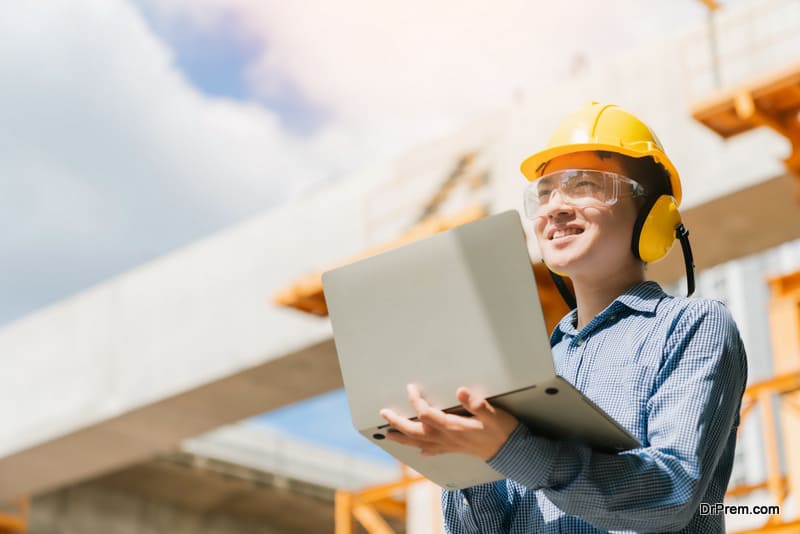
Sustainable and viable nudge interventions
The term “nudge” implies a proactive design architecture strategy to alter people’s behavior and choices without forbidding convenient options or impacting their financial benefits. Financially viable and easy-to-use nudge interventions will be at the forefront of wellness real estate.
Providing stairs along with elevators, giving more access to physical mobility through well-designed pathways, pavements, and biking tracks, integration of smart tech for monitoring health and wellness are few welcome nudges in wellness real estate. Whether it is a high-end wellness resort or futuristic smart buildings and apartments, nudge interventions will uplift conventional interactive communities to bio-experiential multisensory spaces.
Experimenting with biophilic elements
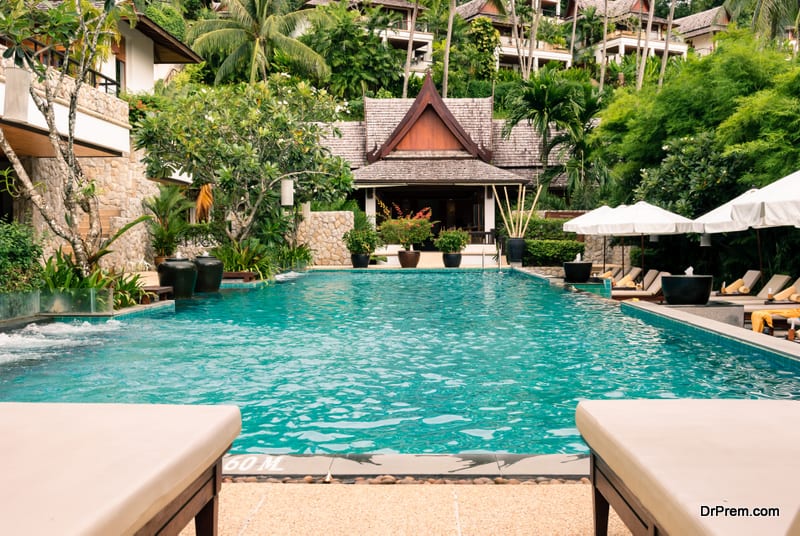
Elements of nature are allowed to intermingle with the built-in environment by adding greenery and creating provisions for ample access to daylight, fresh air, and clean water.It also means inclusion of regenerative actions like growing your own food, water recycling, and using renewable energy.
But, in the latest wellness real estate trends, biophilic designs come with a twist. Beyond traditional biophilic elements like natural light and greenery, futuristic biophilic wellness design is likely to include features mimicking natural ecosystems like:
- Indoor sky gardens allowing diverse plants to thrive under controlled environments.
- Artificial waterfalls or cascades or pools mimicking the natural soothing sound of water.
- Biometric feedback systems to adjust lighting, temperature, and music based on individual needs and preferences.
Personalized Wellness Pods
Another striking wellness real estate trend could be integrating modular wellness pods offering personalized experiences. For example, this could include cryotherapy chambers for cellular regeneration, hyperbaric chambers for enhanced circulation and cognitive function, or sensory deprivation pods for deep relaxation and stress management.
With AI integration, these pods will enable the personalization of settings tailored to individual needs. No longer you will need to visit a specialized wellness resort or wellness clinic to avail of these services but they will be integrated into your residential setup just like we see gyms and fitness centers.
VR-Driven Immersive Wellness Experiences

Regenerative Architecture
Given the growing environmental consciousness, construction with self-healing materials will lead the future wellness real estate trends. These materials can repair minor cracks, fissures, and damages reducing maintenance needs. Healthier indoor environments with integrated air and water purification systems potentially reduce the exposure to allergens and pollutants enhancing the life of the building as well as the dwellers.
Seeking a second home
The radical shift in working modes like WFH or Work from anywhere is spurring changes in wellness living. To beat isolation and burnout, people are seeking ‘second homes’ in vacation rentals, extended stay apartments, homestays, fractional-ownerships and time-sharing models that have great working amenities and wellness programing whether in urban areas or remote locations. A great opportunity for developers to remodel their existing holiday homes or get into fresh investments.
Reinventing Senior Living
Our world is housing a massive aging population battling loneliness and social isolation. The WHO predicts a doubling of 60+ population by 2050. The US shelters 73 million baby boomers with 10,000 touching 65 years every day. By 2030, all of them will be at least 65 years of age.
Traditional mega Senior Living projects comprising only the “Silver Generation” will get rejected but replaced by Multigenerational living concepts. A different approach towards Senior Living supported by closely-knit family and friends will foster family bonding, improve social connections, and support a healthy lifestyle, enabling seniors to live a cool and joyful life.
Size does not matter to scale wellness
Wellness community development can happen on any scale big, small, or medium. Developers have realized that transformative wellness elements could be applied to as small asa 4-home community, a single unit residence or home, or those including hundreds and thousands of residential units. Solutions may vary, but not the wellness principles.
Inclusive Wellness Real Estate

Drive tangible human-centric benefits
Impactful wellness communities can develop only through a proper well-being approach of lifestyle engagement and man-to-man interaction within the community. What are the meaningful things that can improve human lives in the community? Space facilitating healthy living, congenial neighborhood, meaningful interactions, quality entertainment and intellectual nourishment everything matters. Tangible human-centric benefits of a wellness community and the user’s experience will speak volumes of the developer’s mission and vision.
People and places matter

Creative infusion of traditional wellness and modernity
Wellness real estate development entails the infusion of proven traditional wellness practices into modernized communities. Learnings from the past and present are creating opportunities for the right mix and match of wellbeing practices.
Country greenery inspires green bushy walkaways. Rustic ponds inspire well-built pools. Homegrown produce inspires better immunity-balancing and social interaction. Digital detox paves the way for uninterrupted relaxation anddeep social connections.
Work is always on progress in wellness communities
The job is never over in wellness communities but needs continuous reprograming. The need is to adapt, practice, and evolve with emerging demands and opportunities. More the occupants engage in activating and improving built-in wellness components through programming and upgraded operations higher is their standard of well-being.
A wellness spa cannot run in a similar fashion for ages. Community wellness centers need continuous renovation. Enhanced social interaction means more access to quality knowledge, information, and other modernized tools.
State-of-the-art medical wellness projects are showing new directions in programing concepts, bringing in mental health and spirituality as core features whether in design architecture or through guided programs. Visionary developers are on the way to find more innovative reprograming features.
Movement as the default option to enhance physical wellness
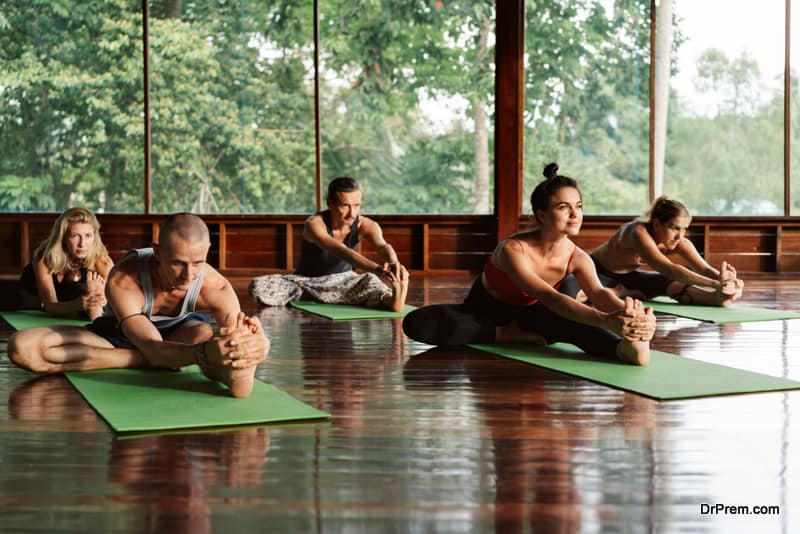
Passive design to support physical and mental wellness
Building and furnishing materials, lighting and ventilation system, and other fixtures that ensure clean air, clean water, and restful sleep would be the key requirements in wellness real estate.The same is applicable to workplace designs even though a substantial fraction of the workforce continues to work from home.
Workplaces would have more spaces for movement and interaction along with biophilic architecture. Apart from allowing sufficient air and sunlight, other features like standing desks, outdoor meeting spaces, and interconnecting spaces and stairs are getting added to foster employee wellbeing in all respects.
Harnessing nature to promote physical, mental, and spiritual wellness
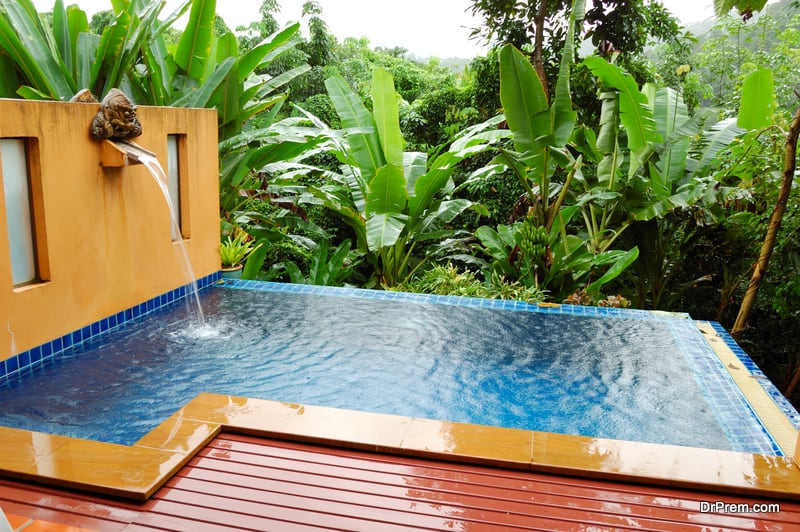
Physical space to remain as the prime focus
Overcrowding communities are real deterrents for wellness, and this has been proved since centuries. Over dense population means fighting for natural resources creating breeding grounds for illness. People would prefer physical distancing but not social distancing. They may adjust with well-designed small indoor spaces but will crave for more outdoor space to breathe freely.
Community spaces to enhance social, intellectual, environmental, and ethical wellness
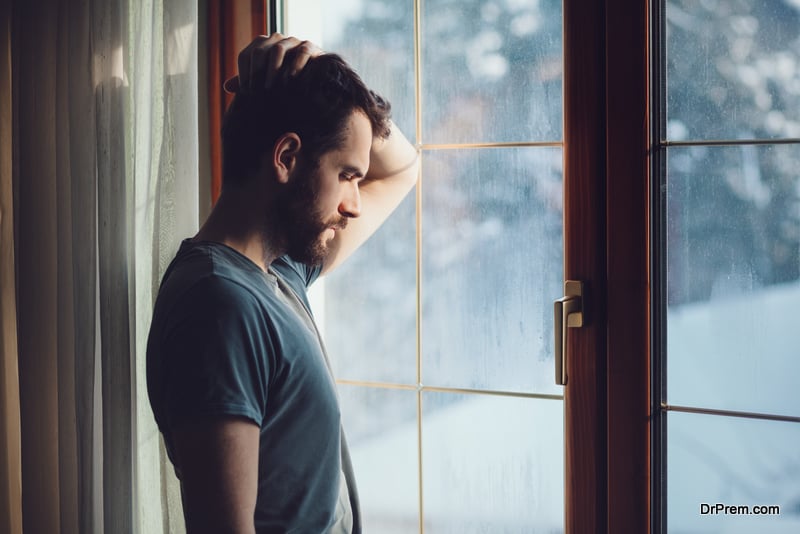
Community interactions also are the birthing grounds of various community development programs supporting environmental and ethical wellness. Recreational clubs, libraries, events, and social programs held regularly also help in nurturing an individual’s intellectual wellness regardless of the age group and social standing. Studies have shown walkable and attractive community spaces are crucial to increase social trust and bonding. People feel proud to belong to a healthy community or group.
Thermal/Mineral bathing springs
To target customers who are refocusing on healing, connecting to cultural traditions and alternative methods of wellness. Governments as well as private investors are incorporating thermal/mineral bathing springs or spas. This can be done in both residential and commercial spaces, apart from the Wellness Tourism industry.
Spaces such as these were also considered to be meeting places, and provided a much needed opportunity to connect with other people. Today, with isolation on the rise, exhilarating spaces such as thermal spas in residential as well as corporate spaces would create a feeling of community. People who live alone would have a unique area to meet others.
All over the world, govt institutions as well as private real estate companies have invested in closed down traditional thermal/mineral springs, or have updated the interiors of already open but outdated facilities, in order to meet the expectation of customers who are used to getting the best of things.
Optimal temperature control to promote sleep and reduce stress

Advanced wellness integrations to take wellness real estate to the next level
As wellness real estate developers create provisions for active lifestyle and healthy dwelling, it cannot stay away from creating provisions for medical clinics that support holistic health and wellness. Health clinics that promote preventative approach through well-monitored mind-body programs, nutrition, and recreation are likely to be integral in these real estate plans. Residents would be encouraged for regular screening tests for both physical and mental wellness.
Many real estate organizations are integrating Telehealth and telewellness support to help people cope up with physical and mental illness in times of distress, and this trend is likely to stay. Spaces for mindfulness, mediation, and yoga would be the common thing in real estate development. Wellness, for the dwellers, would be a part of their daily lives.
On-site health and wellness programs and wellness clubs
As customers’ demands change amid challenging situations, residents of wellness communities will be willing to pay a premium for on-site health and wellness programs like preventative medicine, holistic wellness spa programs, traditional medicines and the likes. Teens and preteens are likely to be active participants of these wellness clubs.
Wellness eateries and cooking clubs

Supporting recreation for wellbeing
Wellness real estate has lot to contribute to this. Recreation and leisure activities are voluntary but that should be something more than mere entertainment. Such activities should enhance the person’s physical, social, mental, and intellectual wellbeing. Recreation should be viewed from the larger perspective of holistic wellness.
Research has established participating in group recreational activities can influence an individual’s working efficiency and family experiences.We would see hobby centers, music and dance classes, art centers, trekking and hiking clubs, etc. that support both indoor and outdoor recreational activities. The demand for curated activities and programs targeted to specific age groups is most likely to surge.
Wellness real estate growth prospects are staggering – How big is the opportunity?

• Holistic Approach: Incorporation of natural lighting, air purification systems, and biophilic design to enhance occupant health.
• Demographic Shift: Appeal across diverse age groups, emphasizing lifestyle integration for a balanced living.
• Corporate Wellness: Increasing demand for office spaces with ergonomic designs and wellness programs to boost productivity.
• Premium Pricing: Developments in wellness real estate often command higher prices, reflecting their added value.
• Technological Integration: Future growth potential through smart homes and buildings equipped with health-monitoring technologies.
Countless global wellness real estate projects are in the pipeline and the number is growing fuelled by the following factors:
- Blurring lines of workspaces as people shift to hybrid model of working.
- Governments would step in to uplift the dwelling environment of low-income groups to prevent spreading of diseases. Wellness homes and communities will become affordable.
- Thriving of multi-generational communities is conducive to social and emotional wellness.
- Wellness communities to get connected with healthcare organization clusters for better coordinated medical treatments and services.
- Regenerative living will grow as new age wellness real estate will promote growing own food, recycle water, and take green initiatives for cleaning the air.
- Enhanced IoT integration to create smart wellness homes and communities.
- Natural resources to promote growth of specialised wellness resorts and wellness centers.
As wellness gets into the DNA of the global population, the sky will be the limit for the wellness real estate. Even employees will choose to work in a sustainable environment that would keep them happy, contended and enhance their contribution.
The entire system that is established now on the premises of sustainable development of real estate has been done after a lot of deliberations have gone into its domain. Studies have also revealed that human behavior alters with the change in environment. People living in ghettos and slums are expected to behave in a way that an apartment dweller won’t. Modern sustainable architectural concepts are designed to improve the quality of life of the users and save space, time, and cost for the building promoters.
The trend of creating wellness building with innovative architecture was considered an element of high importance in the recent Global Wellness Summit 2016.Exclusive spas, state of the art gyms and fitness centers, swimming pools and meditation halls with soothing and environment-friendly music are the prime features set to pamper residents giving them a star resort like feel right at their homes.
However, the property advisors Commercial Real Estate Services (CBRE) have envisaged the concept of wellness with a much broader outlook. The building design incorporates the 6 facets or dimensions of wellness defined by Dr. Bill Heltler, the co-founder of National Wellness Institute, an American non-profit organization started 41 years back.
While designing buildings and residential units, the objective is to strike a fine equilibrium between these aspects of wellness like the intellectual, spiritual, social, occupational, physical and environmental which do not act in isolation. When a perfect balance between these dimensions is achieved, a healthy and happy life manifests as a consequence.
Tracking the way to a sustainable living environment
The green building movement
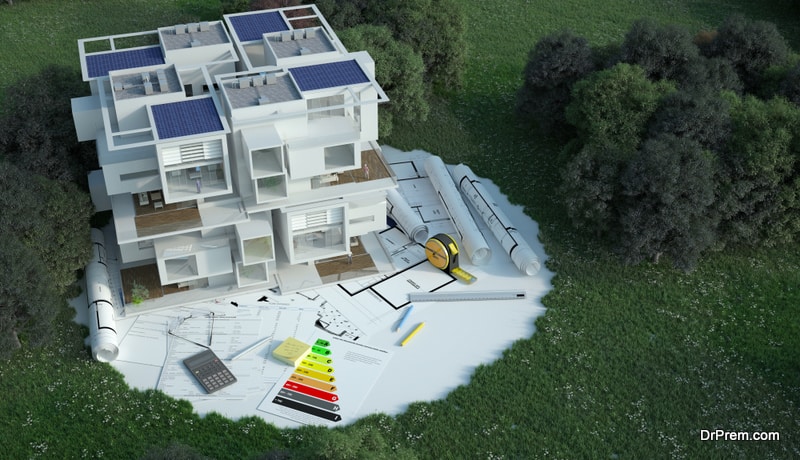
The building standard is an uncompromising set of stipulations and construction norms to gauge workability of building design aspects like acoustics, quality of air, illumination, space economy and other value added elements that would encourage fitness, wellbeing, and contentment.
Wellness Real Estate Case Studies
Pioneers in global wellness community development belonging to renowned hotel and resort developers and real estate groups have identified the key areas of developing wellness community. This is quite evident in their planning and designing of apartments, housing complexes, hotels with special wellness-oriented wing and other types of wellness retreats implementing the best practices to foster the development of wellness communities in the coming years.
Latvia presents the first Wellness Residence:

Other significant wellness real estate properties
The property developers in London have promoted wellness aspects in their multi-squillion pound projects, in Lodhas ‘Lincoln Square’ in Holborn. Properties sell at £ 950000+ and accommodate prestigious universities, museums, art galleries and even law courts to ensure that the consumers’ health, happiness and interests are well addressed!
-Stressing on the intellectual and emotional wellness, Hampstead Manor, the super luxury building complex is to come up with 156 new homes priced between GBP 55,000-16 million.
-Spiritual wellness finds prominence in the flats in One Crown Place near Liverpool Street with plenty of natural light, landscaped gardens and sound of flowing water calming your senses.
-Social wellness equally finds importance in Ballymore’s Embassy Gardens where great communal facilities, open roof top spaces, sky pool and more outdoor spaces in apartments enable a good social mixing pulling a person out from loneliness and boredom.
-Greater communal attractions are visible in Berkeley’s South Quay Plaza where the 56th floor is entirely dedicated to healthy socializing. The floor will house 9000 sq. foot health club, screening room, bar, private dining room and an expansive terrace.
These are few examples meant mainly for the rich having a social standing.
Leading Wellness real estate developer raises $20 million to promote community wellness:
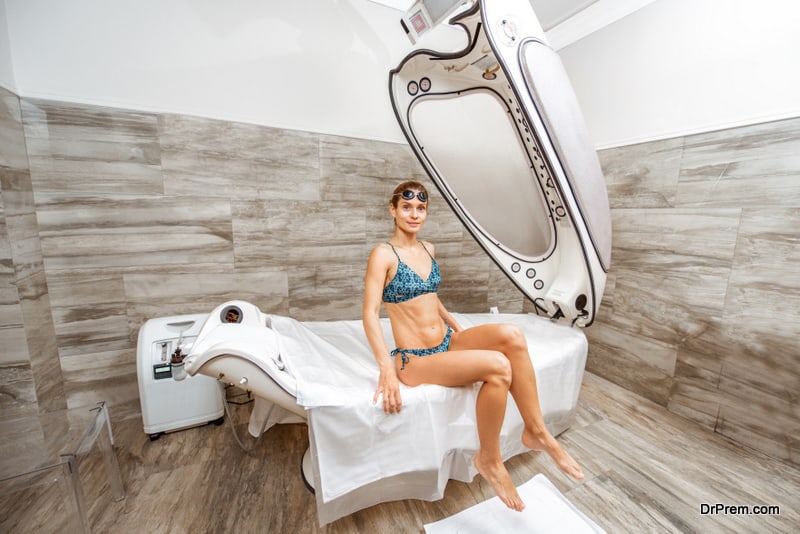
Listings with over-the-top wellness amenities
Health and wellness oriented people are no longer satisfied with a conventional pool and a limited-resourced gym in their residential premises. Wellness residential complexes are adding special features as per the current demand. Apartments and penthouses in New York and Las Vegas, for example, have exclusive wellness activity centers like a huge lap pool, smaller splash pool, hammams, heated marble beds, special treatment rooms offering facials and body massages, spacious fitness centers and special areas for yoga and meditation. Rented apartments with special wellness oriented activity centers are available too. Price range varies between $2.5 million -$18 million. Rented 2 bedroom apartments with special wellness features may cost from $1300-$7330.
Affordable Wellness Housing
